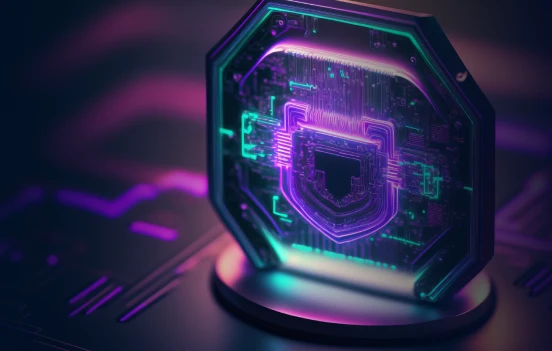LiveScience recently published that a new quantum computer has broken a world record in "quantum supremacy," surpassing the benchmarking performance set by Google's Sycamore machine by 100-fold. (New quantum computer smashes 'quantum supremacy' record by a factor of 100 — and it consumes 30,000 times less power | Live Science)
In 2023, at the annual IBM Quantum Summit in New York, IBM debuted 'IBM Quantum Heron,' the first in a new series of utility-scale quantum processors with an architecture engineered over the past four years to deliver IBM's highest performance metrics and lowest error rates of any IBM Quantum processor to date. (IBM Debuts Next-Generation Quantum Processor & IBM Quantum System Two, Extends Roadmap to Advance Era of Quantum Utility - Dec 4, 2023)
The rise of quantum computing poses significant threats to traditional cryptographic methods. Quantum computers could break many of the cryptographic algorithms we rely on today, nudging organizations to explore and implement quantum-resistant cryptography.
Let's understand quantum-resistant cryptography, why it’s necessary, and the future of data security.
The Quantum Threat: Understanding the Risks
Quantum computers utilize quantum bits (qubits) to perform complex calculations in parallel, leveraging properties like superposition and entanglement. They can solve cryptographic problems in minutes, which would take thousands of years for classical computers. Notable algorithms like Shor’s and Grover’s challenge current cryptographic systems. Shor’s can break public-key cryptosystems like RSA and Grover’s, reducing the security of symmetric systems like AES from exponential to foreseeable time.
What is Quantum-Resistant Cryptography?
Quantum-resistant cryptography, or post-quantum cryptography (PQC), involves cryptographic algorithms designed to withstand attacks from both classical and quantum computers. Unlike traditional public-key algorithms that are vulnerable to quantum threats, PQC relies on mathematical problems that are currently secure. Key approaches include lattice-based cryptography, code-based cryptography, hash-based signatures, and multivariate quadratic equations.
Why Do We Need Quantum-Resistant Cryptography Now?
- Data Harvesting Attacks: Adversaries may intercept and store encrypted data to decrypt it once they access quantum technology. This "harvest now, decrypt later" approach poses a significant threat to sensitive information that must remain confidential for years, like healthcare records and government data.
- Long Transition Periods: Shifting entire systems and infrastructure to new cryptographic standards takes time. Implementing, testing, and integrating quantum-resistant algorithms requires rigorous time, which is why organizations must begin preparation now.
- Regulatory Compliance: As governments and international bodies recognize the potential threat of quantum computing, they may mandate organizations to adopt quantum-resistant solutions. Early adoption ensures compliance and minimizes disruptions in the future.
Implementing Quantum-Resistant Cryptography: Challenges and Considerations
- Compatibility and Integration: New algorithms must be compatible with existing infrastructure and protocols. This may involve software updates, changes in hardware (e.g., HSMs—Hardware Security Modules), and updates to network protocols like TLS.
- Performance Impact: Quantum-resistant algorithms have higher computational and memory requirements, resulting in heavier loads and greater memory use. The slowdown in performance may affect transaction speeds and efficiency in fast-paced industries. In the IoT ecosystem, increased resource demands may challenge devices with limited hardware capabilities.
- Preparing for Hybrid Environments: Because classical and quantum-resistant algorithms will coexist, strong strategies for managing encryption keys and data pathways will be required. Organizations should establish frameworks that enable dual encryption modes to ensure smooth handling and switching between the two cryptographic processes, minimizing disruptions and preserving data integrity.
Preparing for the Quantum Future: Practical Steps
- Risk Assessment: Evaluate the sensitivity and lifespan of your data to determine which assets are at risk of future quantum threats. Identify high-priority areas where quantum-resistant cryptography should be implemented first.
- Adopt Hybrid Cryptography: In the interim, organizations can deploy hybrid cryptographic solutions that combine classical and quantum-resistant algorithms, ensuring backward compatibility while gradually transitioning to fully quantum-safe methods.
- Monitor Standards and Developments: Stay informed about developments from NIST and other standardization bodies. This will ensure your organization is ready to adopt the approved quantum-resistant algorithms as they are finalized.
- Collaborate with Experts: Engage with cybersecurity vendors and experts specializing in quantum-resistant solutions. Fortanix offers data protection and key management solutions that align with post-quantum cryptography standards, providing a secure foundation for a quantum-resilient future.
How Fortanix Can Help Secure Data in a Quantum World
Effective key management allows organizations to transition between outdated algorithms and post-quantum alternatives. Key Insight, a new industry-first solution in the Fortanix platform, is designed to help enterprises discover, assess, and remediate risk and compliance gaps across hybrid multicloud environments.
Fortanix Key Insight provides organizations with a powerful tool to discover, assess, and remediate their cryptographic environment in preparation for the post-quantum cryptography (PQC) transition.
Discover: Fortanix Key Insight identifies all encryption keys and data services across multicloud environments. It offers a detailed overview of your cryptographic landscape, including where keys are located and how various data services are using them. This visibility is crucial for understanding your current security posture and identifying potential vulnerabilities that could be exploited in a post-quantum world.
Assess: After discovery, the next step is to assess the gaps in your cryptographic security posture. Fortanix Key Insight evaluates the strength of your existing encryption algorithms and highlights any areas vulnerable to quantum threats. It helps prioritize which keys, algorithms, and systems need attention based on their risk levels.
Remediate: Once vulnerabilities are identified, Fortanix Key Insight enables organizations to remediate and implement PQC solutions. It helps transition to post-quantum algorithms by providing cryptographic agility, allowing organizations to update encryption protocols efficiently. With this approach, businesses can ensure they are ready for the quantum era without compromising current operations.
Action Plan
To ensure a smooth transition to post-quantum cryptography (PQC), organizations can leverage Fortanix's centralized platform to consolidate and control cryptographic operations.
This platform provides complete visibility into key usage, including human and machine identities, while building a comprehensive inventory of sensitive data to strengthen security strategies.
Using Confidential Computing technology, encryption keys are kept secure within integrated HSMs while providing secure access across hybrid, multi-cloud environments. Fortanix also ensures the rapid deployment of new PQC algorithms without scalability issues, adapting to the larger key sizes required.
With built-in support for Zero Trust strategies, the platform seamlessly integrates with existing technology stacks, enabling detailed data access policies and administrative safeguards. Fortanix offers effective solutions for organizations that are ready to adopt the next phase of data security with PQC.











